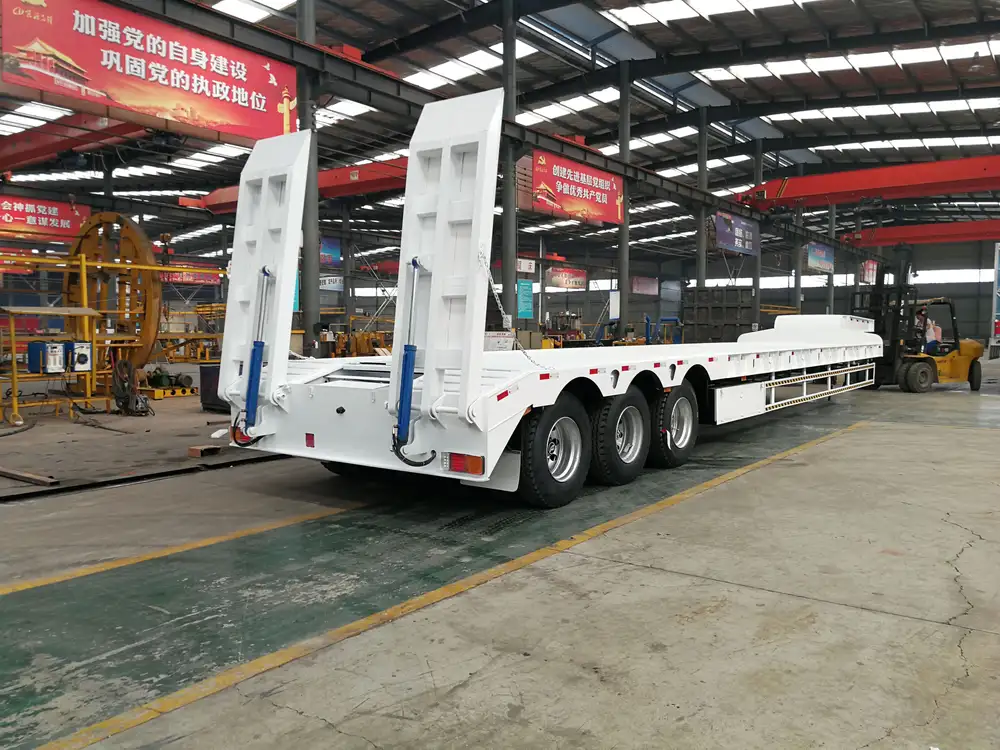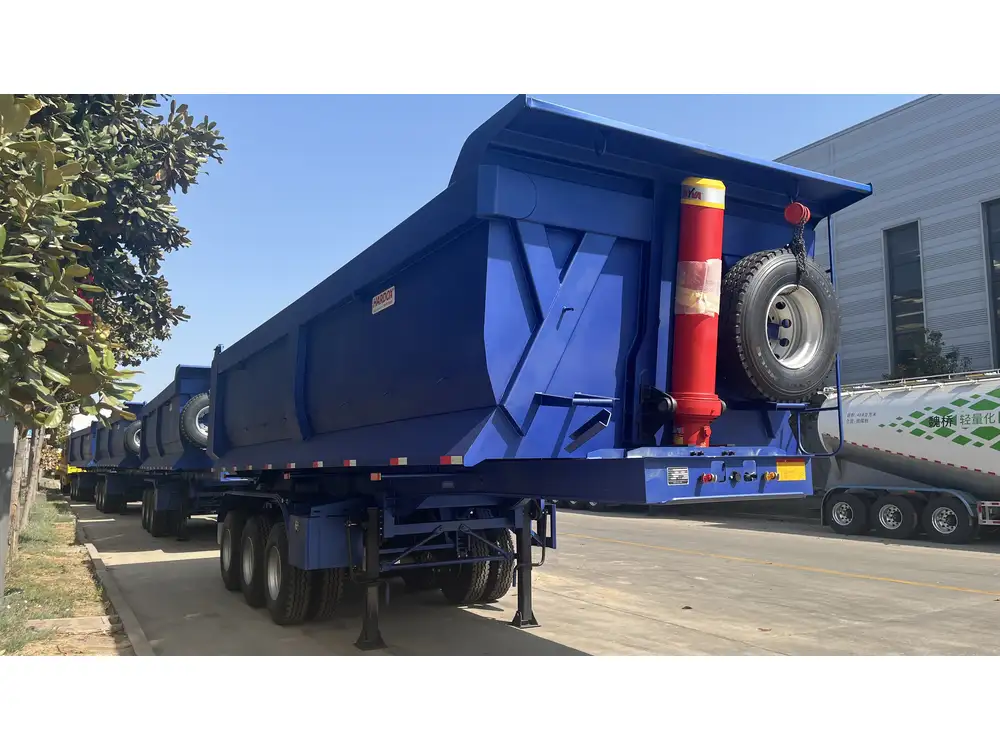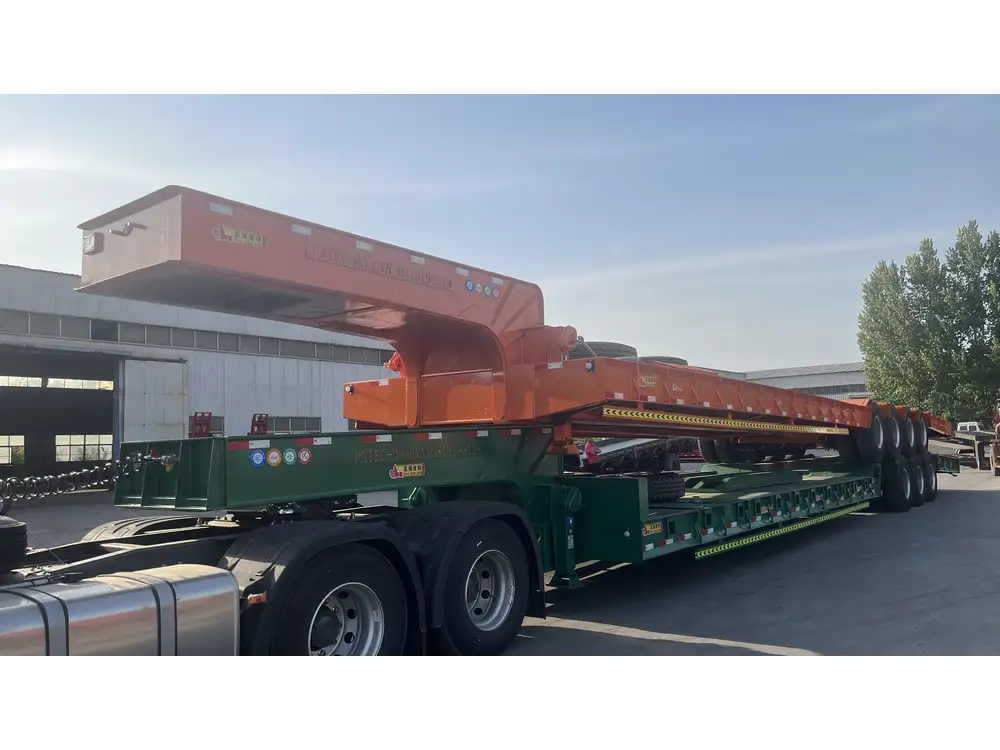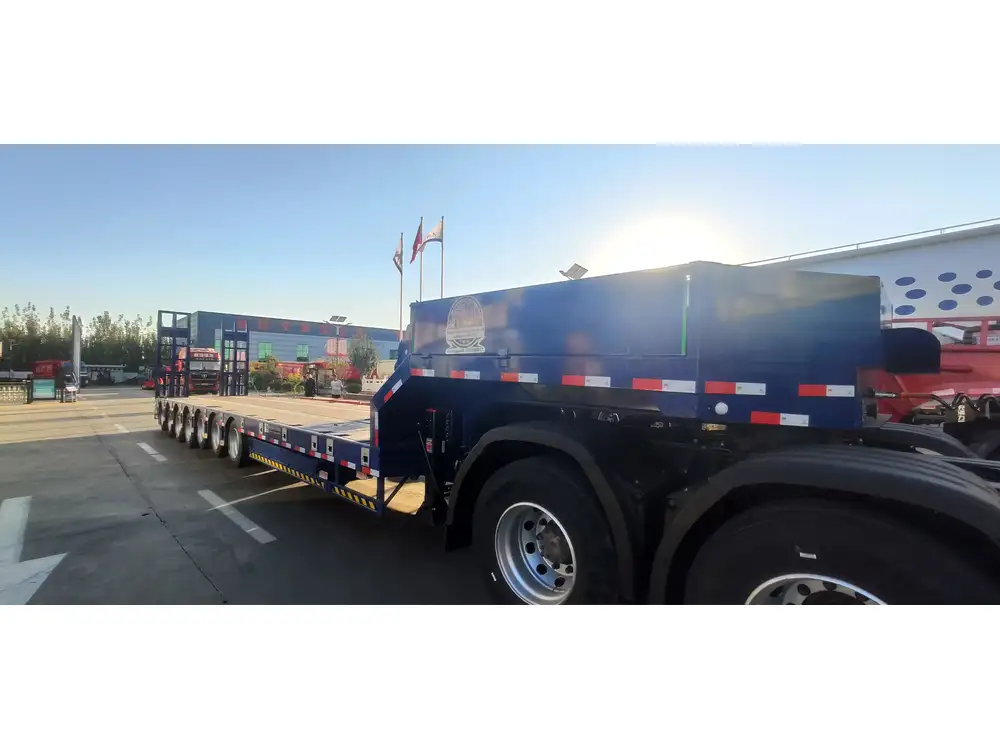When it comes to the transportation sector, the backbone of logistics and goods delivery often rests on the robust structure of semi-trailer trucks. These behemoths are not just mere vehicles; they are complex machines meticulously engineered to serve various functions across multiple industries. In this article, we will explore the intricate process of how semi-trailer trucks are made, diving into the critical steps involved in their manufacturing.
Key Components of Semi-Trailer Trucks
Before delving into the manufacturing process, it’s essential to understand the key components that make up a semi-trailer truck. These components work together harmoniously to ensure safety, efficiency, and durability:
1. Chassis
- Material Composition: Typically constructed from high-strength steel or aluminum for maximum strength-to-weight ratio.
- Functionality: Serves as the main frame, supporting the load and housing various systems.

2. Axles
- Types: Can be single, tandem, or tri-axle configurations.
- Purpose: Ensures proper weight distribution and vehicle stability.
3. Suspension System
- Varieties: Air, mechanical, or leaf spring suspension systems.
- Importance: Aids in load control and provides smoother rides.
4. Brake System
- Configurations: Includes air brakes, hydraulic brakes, and electric brakes.
- Safety: Essential for reducing stopping distances, especially at high speeds.

5. Trailer Body
- Designs: Flatbed, refrigerated, and enclosed styles tailored for different cargoes.
- Material: Often uses composite or thermo-efficient materials in specialized applications.
6. Electrical Systems
- Components: Lighting, signaling, and onboard computer systems.
- Role: Improve visibility, ensure compliance with regulations, and enhance operational efficiency.
The Semi-Trailer Manufacturing Process

Step 1: Design and Engineering
The journey of a semi-trailer truck begins in the design phase. This initial stage involves collaboration between engineers, designers, and clients to determine the specific requirements and functionality of the truck.
- CAD Software: Utilization of advanced computer-aided design (CAD) software is critical to create blueprints that meet operational and regulatory standards.
- Stress Testing: Models undergo simulations to identify potential weaknesses before physical production begins.
Step 2: Material Procurement
Once the design is finalized, the next crucial step is sourcing the necessary materials.
- Quality Materials: Manufacturers focus on obtaining high-durability materials, including steel, aluminum, and composites, ensuring each component meets industry standards.
- Supplier Relationships: Developing relationships with reliable suppliers can ensure the quality and timeliness of material delivery.
Step 3: Fabrication
This stage encompasses several key activities:

Welding and Cutting
- Technique: Automated CNC machines may be used for precision cuts, followed by robotic or manual welding to assemble the structure.
- Quality Control: Rigorous inspection systems are in place to verify the integrity of welds.
Painting and Finishing
- Surface Preparation: Components are cleaned and treated to prevent corrosion.
- Coating: High-quality paints and coatings are applied to enhance durability and aesthetics.
Step 4: Assembly
Assembling a semi-trailer requires intricate coordination among various components:
- Sub-assemblies: Individual parts, such as the chassis, axles, and suspension systems, are assembled separately before integrating them into the complete truck.
- Fit and Test: Each assembly undergoes fitment tests to ensure compatibility and function before moving to the next stage of production.

Step 5: Quality Assurance
Quality is paramount in the manufacturing of semi-trailer trucks, as these vehicles must operate safely under heavy loads.
- Testing Protocols: Comprehensive testing, including dynamic testing, weight load analysis, and road simulations, assesses performance and safety features.
- Regulatory Compliance: Ensuring all manufactured units comply with transportation safety standards and emissions regulations is critical before they leave the factory floor.
Step 6: Final Assembly and Delivery
After passing quality assurance tests, the trucks undergo final assembly, integrating all electrical and mechanical systems.
- Customer Specifications: Custom features are installed based on client requirements, which might include GPS systems, specific trailer types, or unique branding features.
- Delivery Process: Coordination with logistics teams is crucial for timely delivery to the customer, along with any essential paperwork and compliance documentation.
Innovations in Semi-Trailer Truck Manufacturing

Sustainability in Design
The trucking industry is witnessing a pivotal shift towards sustainability. Manufacturers are increasingly focusing on eco-friendly practices through:
- Material Recyclability: Incorporating recycled materials into production.
- Fuel Efficiency Technologies: Implementing designs that improve aerodynamics to enhance fuel efficiency.
Technological Integration
The integration of cutting-edge technology continues to redefine semi-trailer truck manufacturing. Key examples include:
- Telematics: Advanced telematic systems allow real-time tracking and maintenance alerts.
- Automated Manufacturing Processes: Implementing robotics and AI to improve efficiency and reduce human error during the production process.
Challenges in the Manufacturing Process
In any manufacturing industry, challenges abound. Here are some key issues faced by semi-trailer truck manufacturers:

Supply Chain Disruptions
The global supply chain is often susceptible to disruptions caused by geopolitical issues, natural disasters, or pandemics. Manufacturers must develop strategic partnerships and flexible sourcing strategies to adapt quickly.
Regulatory Changes
The trucking industry is heavily regulated, and compliance with local and federal laws can be resource-intensive. Staying current with evolving regulations demands constant monitoring and agility within manufacturing processes.
Skilled Labor Shortages
As technology progresses, the need for skilled labor in specialized fields like welding and mechanical engineering escalates. Manufacturers face the dual challenge of training current employees and attracting new talent.

Conclusion: The Future of Semi-Trailer Truck Manufacturing
In conclusion, the manufacturing of semi-trailer trucks is a complex, multi-faceted process that combines artistry with engineering precision. Each stage of production, from design to delivery, is tailored to ensure that the end product meets the demands of modern-day logistics while adhering to stringent safety and quality standards. As the industry moves toward sustainability and embraces innovative technologies, the future looks promising—an evolution marked by efficiency, safety, and environmental consciousness.
The continued advancement in manufacturing practices and commitment to quality will play a pivotal role in shaping the next generation of semi-trailer trucks, ensuring that they remain the lifeblood of the transportation industry.
By understanding the intricacies of how semi-trailer trucks are made, stakeholders can better appreciate the importance of these vehicles within the logistics ecosystem, ultimately leading to improved operational strategies and customer satisfaction in this ever-evolving sector.



